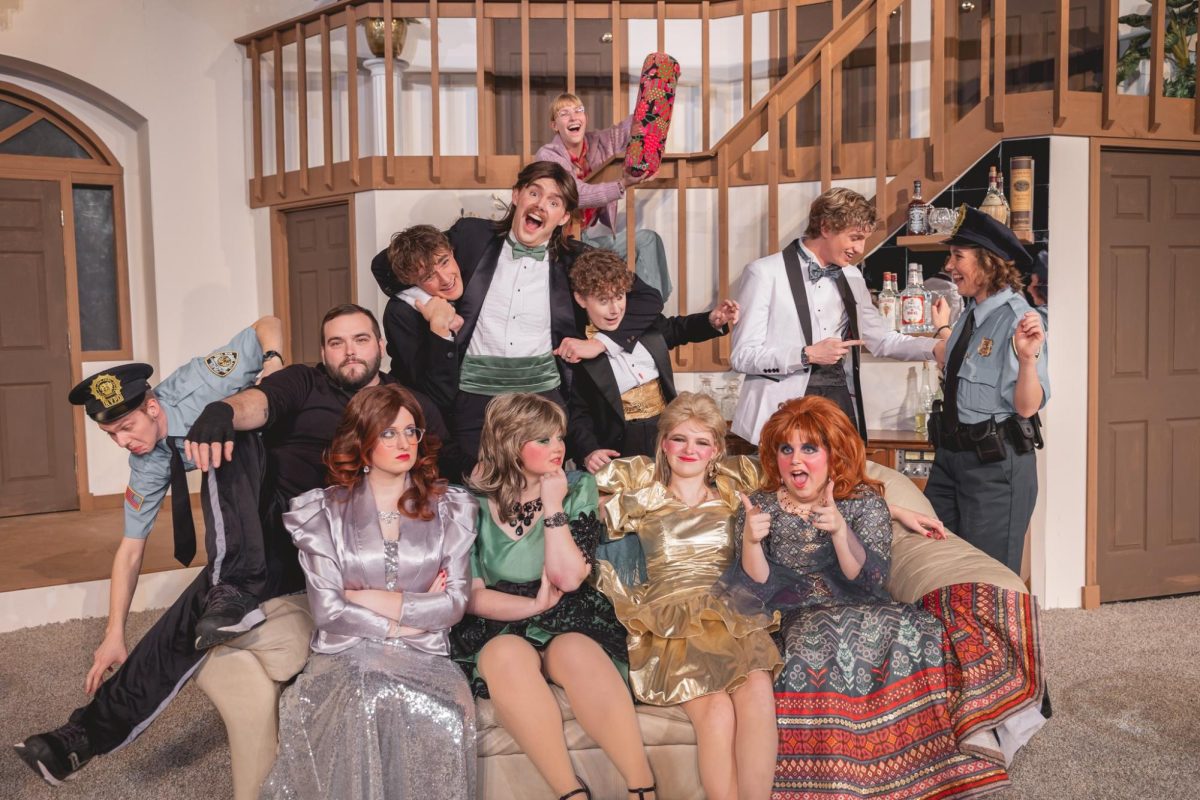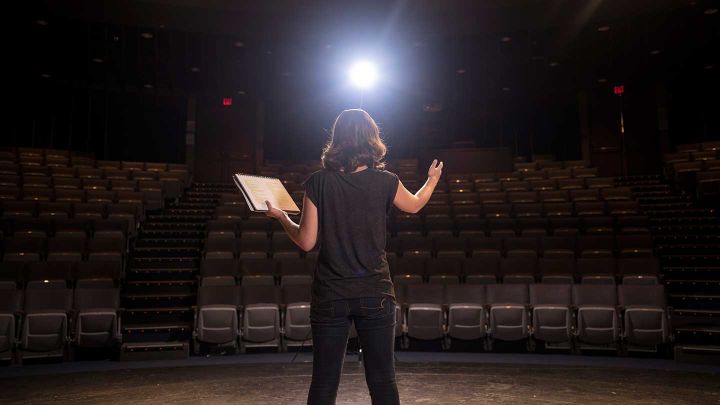Shakespeare has been adapted in pretty much every way imaginable since the Bard first penned his plays 400 years ago. To make their production of “King Lear” unique, the Calvin Theatre Company donned white outfits, black and white face paint almost reminiscent of the band KISS and round red noses. If you’re a coulrophobe, don’t be too worried: these clowns aren’t the creepy kind found in circuses, horror movies and nightmares. They’re a traditional figure in drama — more like mimes than circus performers. According to director Stephanie Sandberg, the clown represents an important aspect of how humanity experiences life, suffering and community.
The play began with the troupe entering the Lab Theater and encountering what the audience will have noticed upon their own arrival: a giant box at the far end of the stage, which inspired panic and conflict among them. Inside this box were smaller boxes containing props, costume pieces and scripts emblazoned with the title “King Lear.” The lead clown, soon to become King Lear himself, directed his fellows to their places, and at the clash of his staff, the story began.
While donning a cloak or hat, a clown would become a particular “Lear” character, allowing for the cast of 11 to cover all the characters in the play which sometimes resulted in an amusing and rapid back-and-forth exchange as an actor would play multiple characters within the same scene.
The play was delightfully self-aware, with the actors staying in their respective clown roles from the beginning until the very end — including intermission, during which they interacted with audience members outside and within the theater. During the play itself, clowns not included in a specific scene sat in the audience, watching. With a cry of “Scene change!” the clowns broke out of their “Lear” characters and scrambled to rearrange the few set pieces around the box. While this smashing of the figurative fourth wall does pull the audience sharply out of the story, it was charming.
With their frilly white costumes evocative of innocence, the actors’ constantly-visible “clownness” prevented the dark burden of the tragedy from becoming too heavy. Not that justice wasn’t done to the seriousness of the story: multiple, motionless bodies were displayed on stage. Jon DeVries’ Edmund was sufficiently creepy and conniving, Sam Camp gave a passionate portrayal of the rage and madness of Lear and the dysfunctional (to say the least) families of Lear and Gloucester caused strife and worse for every character in the play.
Despite all this, I didn’t leave the theater feeling gloomy. The clowns, with their penchant for silliness and whimsy and their energy and ability for slapstick humor, added lightness to the play. The play-within-a-play and self-awareness aspects of the performance reminded the audience that, after all, this is just a story. This is a story with its fair share of darkness, but it is one that does not lack love, loyalty and the chance for reconciliation. It is a story that can still be enjoyed on Friday, Nov. 20, and Saturday, Nov. 21. Since, as King Lear says, “nothing can come of nothing,” do something with your night and support the Calvin Theatre Company in their first production of the year.







